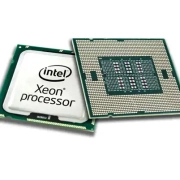
Request a supercomputer!
Stay with us until the end of this article to gain a comprehensive understanding of how processing servers work and their capabilities.
A processing server, also known as a CPU server (Central Processing Unit), is considered the heart and brain of a server. This core component of a server or server system is responsible for performing the calculations and processing required to run applications and services. Acting as the central processing unit in the system, it executes commands and computations, providing high processing power and the ability to handle multiple simultaneous operations.
The operation of a server’s CPU can be divided into four main stages: Fetch, Decode, Execute, and Store.

Processing servers work as the central brain of systems, managing tasks such as data handling, service delivery, and supporting complex operations. Their powerful processing capabilities enable them to run multiple tasks simultaneously and support various applications and services, making them an essential component in modern IT infrastructures.
In conclusion, processing servers play a vital role as the central brain of systems in enhancing efficiency, managing data, and delivering complex services in today’s world. With high processing power, the ability to execute multiple simultaneous operations, and support for numerous programs and services, these servers enable organizations to tackle increasing challenges and meet growing demands effectively. In summary, processing servers are the cornerstone of IT and communication systems, empowering businesses to perform optimally in today’s complex, data-driven world.
Related links